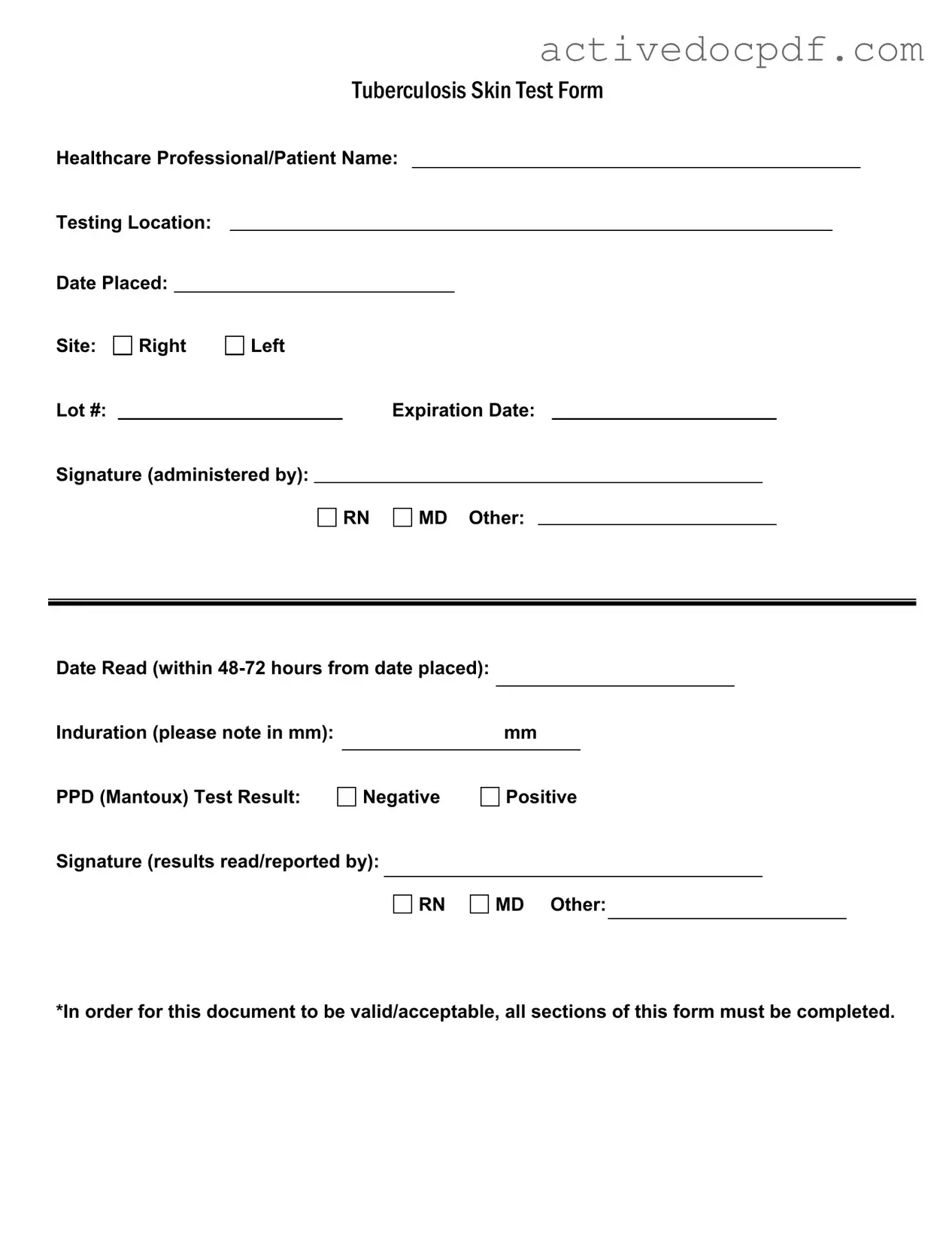Free Tb Test PDF Form
The Tuberculosis Skin Test Form is a crucial document used to record the details of a tuberculosis skin test, also known as the PPD (Mantoux) test. This form includes essential information such as the healthcare professional's name, testing location, and results, which must be documented accurately. Completing all sections of the form is vital for its validity and acceptance in medical settings.
Edit Form Online
